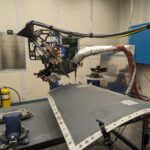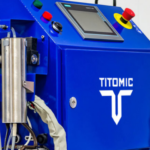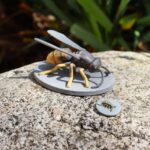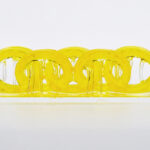While most people won’t have many issues with their instruments, travelling musicians and roadies know the value of a solid piece of equipment, especially during transport. However, even the most brutal of guitar players may have met their match in a new 3D printed guitar. Engineering firm Sandvik‘s guitar is supposedly a smash-proof metallic masterpiece. Don’t take our word for it: veteran, neo-classical virtuoso Yngwie Malmsteen was brought on board to test it himself and he isn’t shy about his enthusiasm.
“This guitar is a beast! Sandvik are obviously on top of their game,” says Malmsteen. “They put the work in, they do their hours. The results are amazing. I gave everything I had, but it was impossible to smash.”
Malmsteen and the various demo-testers have been putting the guitar through hell to show its solid form. So far, it seems unscathed from being bashed on various surfaces from floors to chairs to a live stage. It holds up nicely, even keeping together the various parts that aren’t part of the full solid frame. Sandvik’s engineering team made the guitar precisely to Malmsteen’s specifications.
The company wanted to show that steel can be both light and indestructible within certain designs. As a result, the team got together their engineers along with guitar designers to put together Sandvik’s 3D printed guitar from scratch. This is the company’s first axe, so it was probably a great help to have guitar designer Andy Holt on-board.
Building an Unbreakable 3D Printed Guitar
For the 3D printed body, Sandvik utilised their own expertise in metal powder and additive manufacturing. Using lasers, they traced a design out of titanium powder, fusing the layers of material one on top of the other. The neck, on the other hand, is a steel construct. According to Sandvik, the layer resolution is thinner than the average human hair.
As a design, Sandvik’s 3D printed guitar has no real joints. It conjoins together, from body to neck to headstock forming a solid, singular structure. On the other hand, the various add-ons like humbuckers, string-tuning knobs and peripheral parts are removable. The peripheral parts were put on afterwards but appear to be surprisingly solid as part of the whole guitar. A super-light lattice structure between the guitar’s neck and fretboard helps keep the whole thing together, strengthening both of them as they meet the body. 3D printing was crucial for the creation process as it allows for easy production of novel architectures.
“Additive manufacturing allows us to build highly complex designs in small production runs,” said Amelie Norrby, additive manufacturing engineer at Sandvik and part of the 3D printed guitar development. “It lets us create lighter, stronger and more flexible components with internal structures that would be impossible to mill traditionally. And it is more sustainable because you only use the material you need for the component, minimizing waste.”
Featured image and video courtesy of Sandvik.











